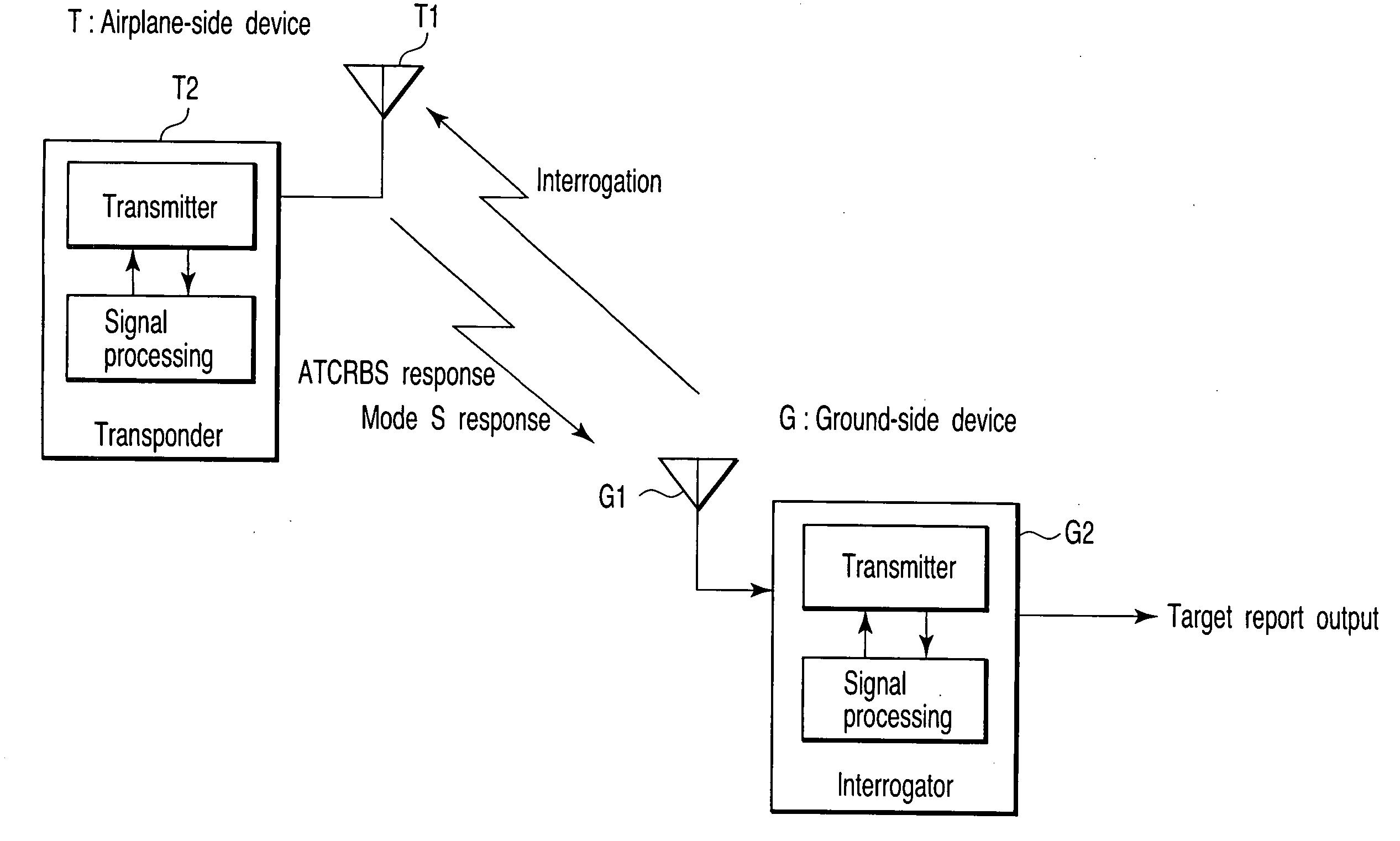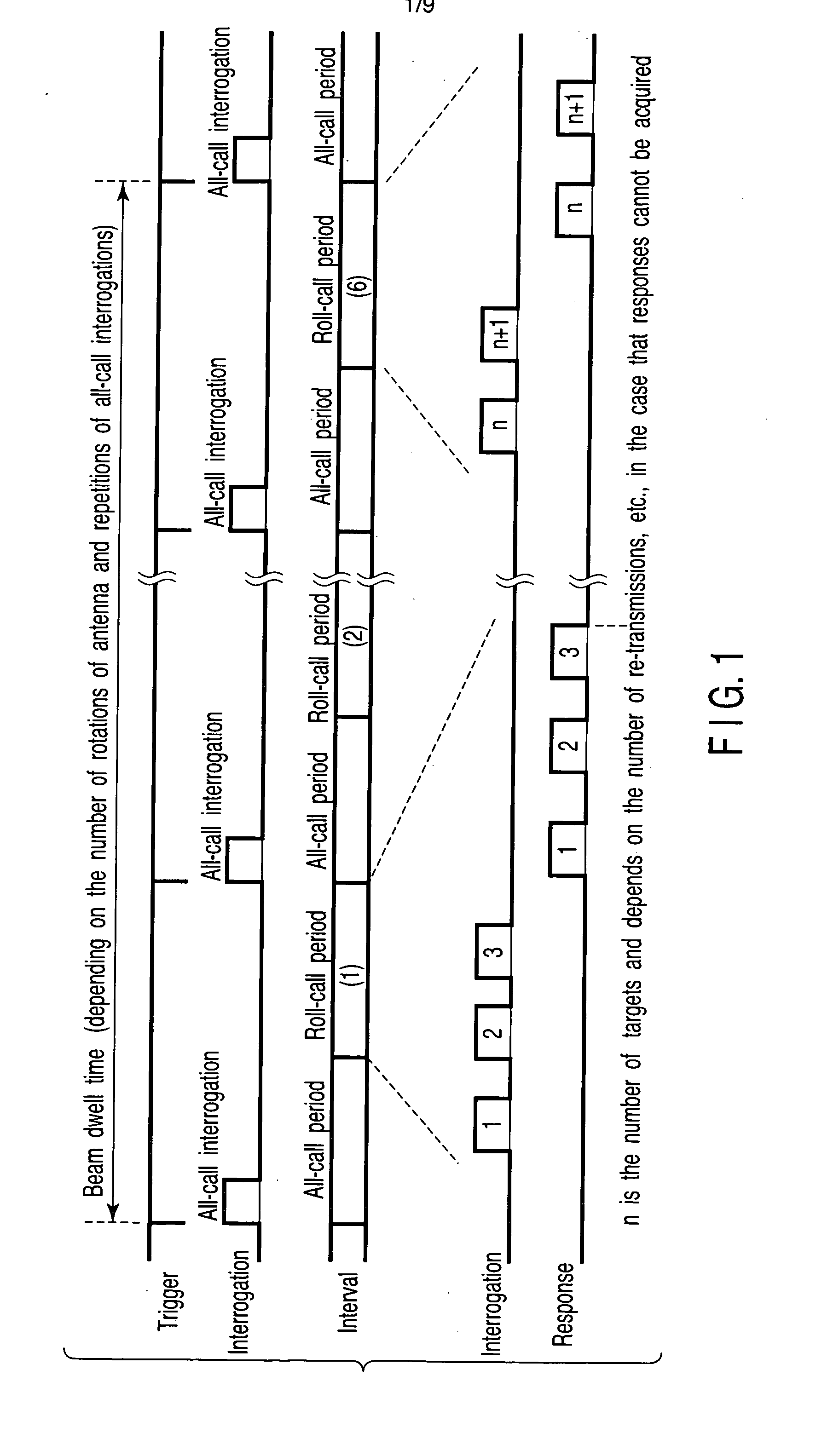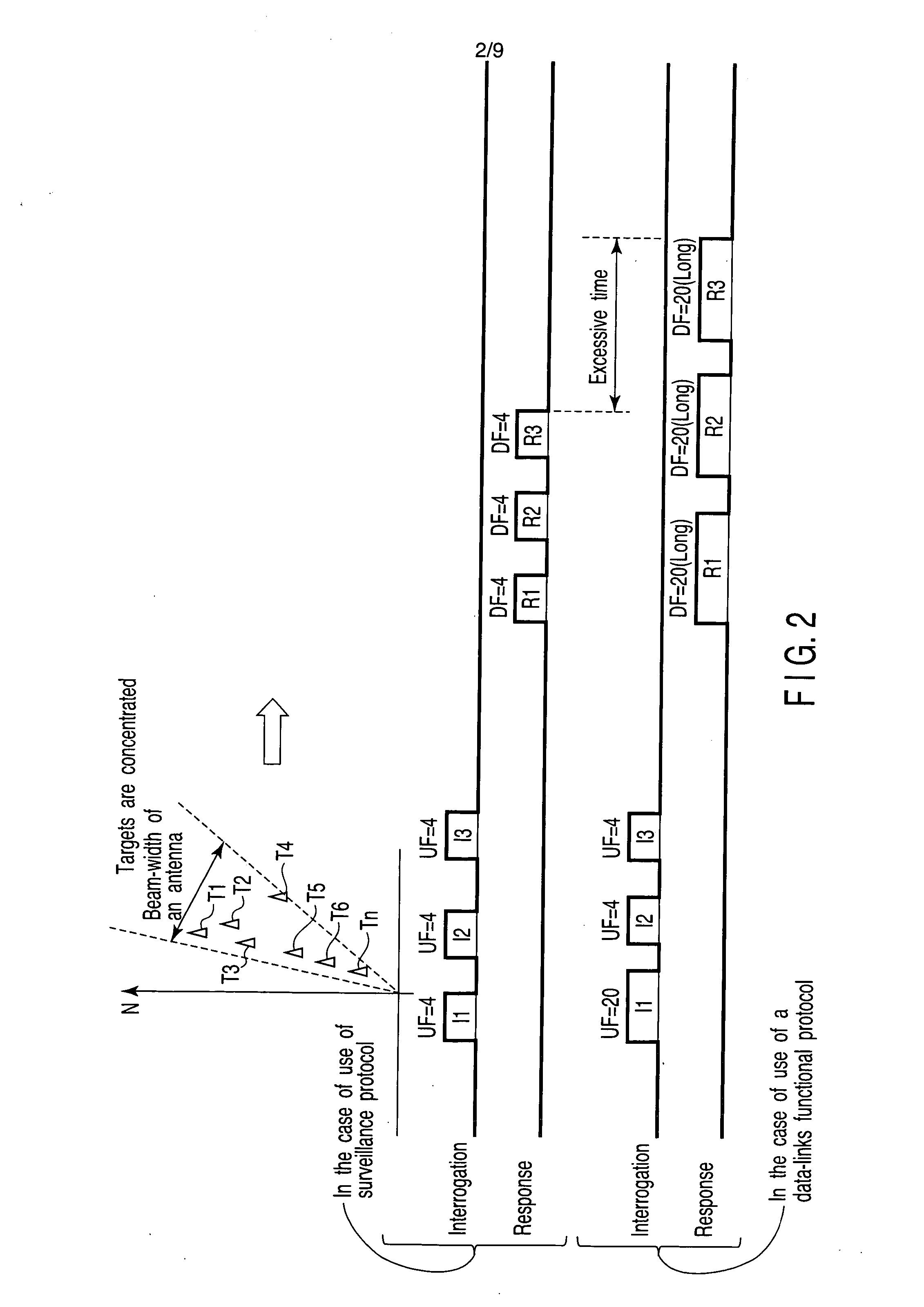Secondary surveillance radar and its interrogation transmission method
a second-generation radar and transmission method technology, applied in the field of second-generation surveillance radar, can solve the problems of deterioration in the detection rate of a conventional atcrbs transponder, inability of ssr to schedule the transactions, and lengthening the time required for transactions, so as to secure the time for transmitting other interrogations
- Summary
- Abstract
- Description
- Claims
- Application Information
AI Technical Summary
Benefits of technology
Problems solved by technology
Method used
Image
Examples
Embodiment Construction
[0024] At first, prior to an explanation of an embodiment of the present invention, a brief of an SSR mode S and problems of a present interrogation transmission system will be explained specifically.
[0025]FIG. 1 is an operation timing view for explaining a brief of an SSR mode S to which the present invention is adopted. In the SSR mode S, as shown in FIG. 1, an SSR divides a beam dwell time into one or more scheduling periods by using a trigger signal with a constant cycle. And, the SSR divides each scheduling period into two, which are an all-call period (period to capture mode S transponder and ATCRBS transponder) and a roll-call period (period to perform selective interrogation and response to mode S transponder) to transmit an all-call interrogation signal in accordance with a trigger signal in each scheduling period. Thereby, the SSR captures the target within an antenna beam. Here, in FIG. 1, “n” indicates the number of targets. When the SSR cannot capture a response, it pe...
PUM
 Login to View More
Login to View More Abstract
Description
Claims
Application Information
 Login to View More
Login to View More - R&D
- Intellectual Property
- Life Sciences
- Materials
- Tech Scout
- Unparalleled Data Quality
- Higher Quality Content
- 60% Fewer Hallucinations
Browse by: Latest US Patents, China's latest patents, Technical Efficacy Thesaurus, Application Domain, Technology Topic, Popular Technical Reports.
© 2025 PatSnap. All rights reserved.Legal|Privacy policy|Modern Slavery Act Transparency Statement|Sitemap|About US| Contact US: help@patsnap.com



